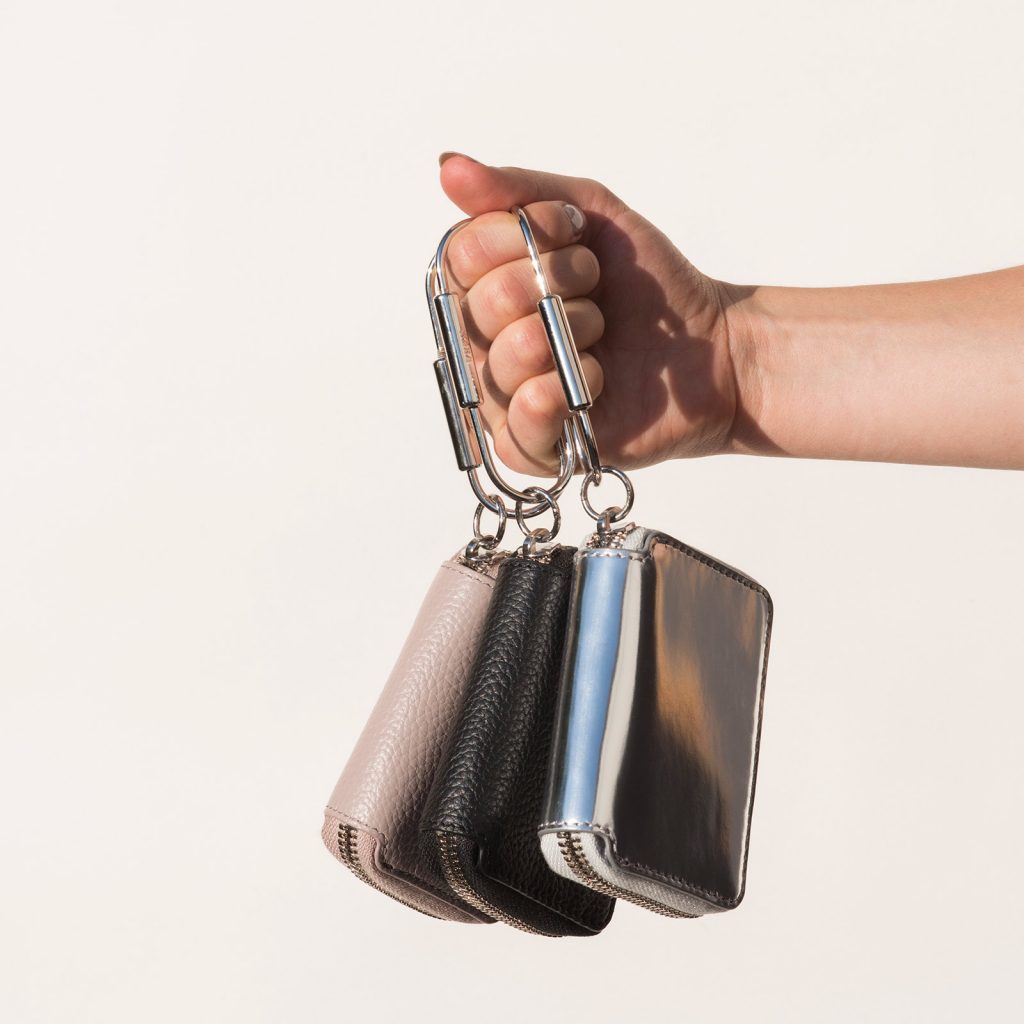Interview: KARA Founder and Designer Sarah Law
On office culture, getting ripped off by big brands and her new collaborative backpack with Ace Hotel

KARA bags appeared from nowhere and suddenly were everywhere, from the shoulders of design-lovers to actors and the Insta-famous. The now-signature leather backpacks are instantly recognizable, despite bearing no branding aside from a discreetly embossed label on the zipper tags. The line has grown to include crossbodies, totes and more, all designed to show off the high-quality materials, be it pebble-grained leather or lamb shearling. We’ve long admired designer Sarah Law’s work from afar, since she launched her NYC-based brand KARA in 2013, and finally had the opportunity to chat with her on the phone to discuss entrepreneurship lessons, her awesome customized sweatshirts for her team, and KARA’s brand new Canvas Dry Bag made for the Ace Hotel.
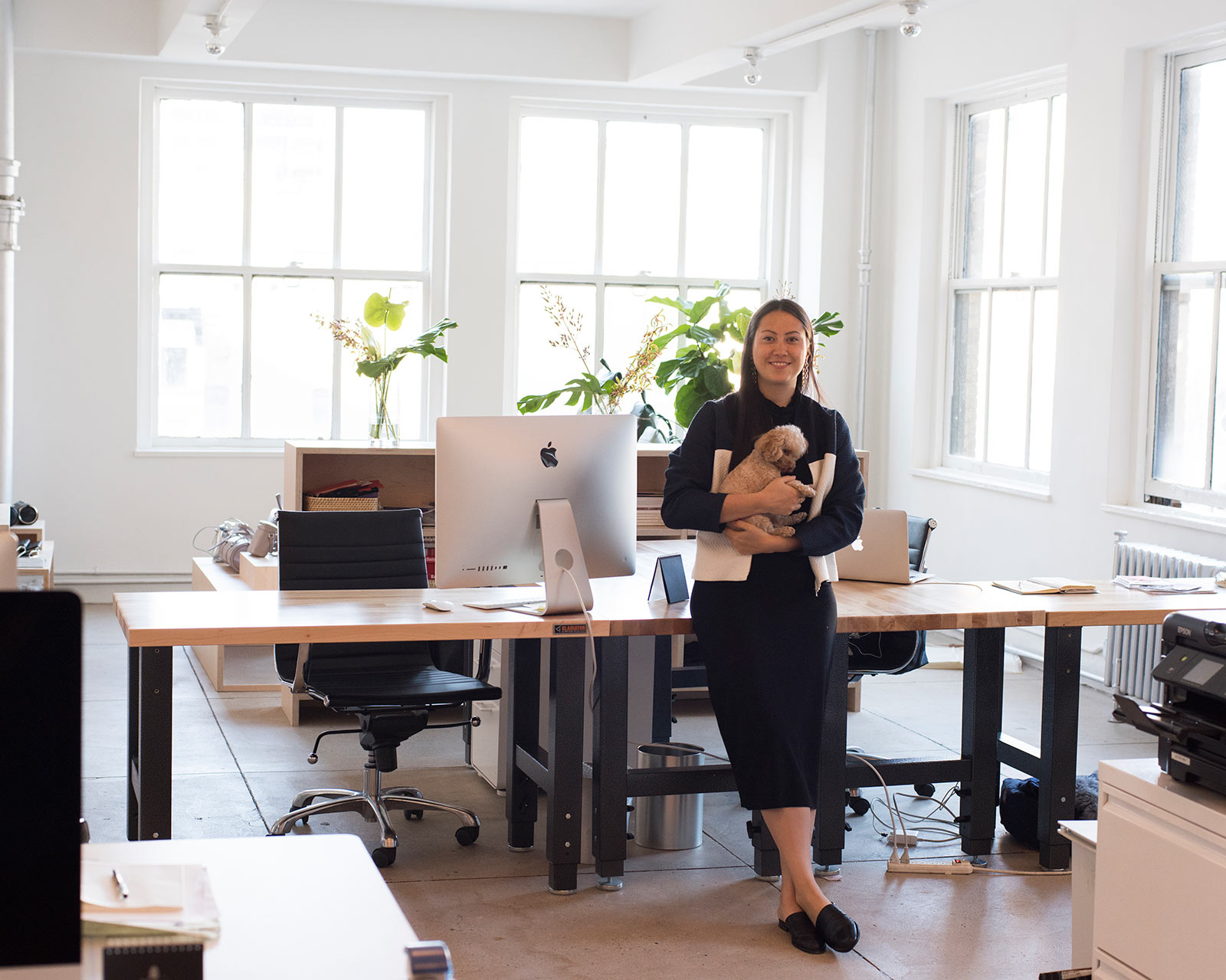
I heard you moved into a new space in TriBeCa. What was the decision behind the move?
We moved in April, so we’ve been here for two months now. Initially, the decision
was because I was in the CFDA Incubator for two years and the program ended; it started in March 2014 and ended this past March. A part of the program is you stay in their office space, in the Garment District, for two years. So we moved from there to here.
The thing that’s been really nice has been—the way that I started the brand was that typically start-up story, with money that I had saved. The first year of the company, myself and my employees, we just worked in my apartment. We took all the furniture out of the living room and dining room, and it was all desks. Our distribution is quite large now (we work with a distribution center in New Jersey), but for a long time, we were packing and shipping boxes from my apartment. I think the last time that we got away with that, my doorman was like, “OK, this is the last time that 90 boxes can come into the apartment.” So afterwards, we looked for a distribution center and then around that time I was also invited into the CFDA Incubator. We went from that program for two years into a space that was three times larger. Being more kind of downtown, it’s been very inspiring.
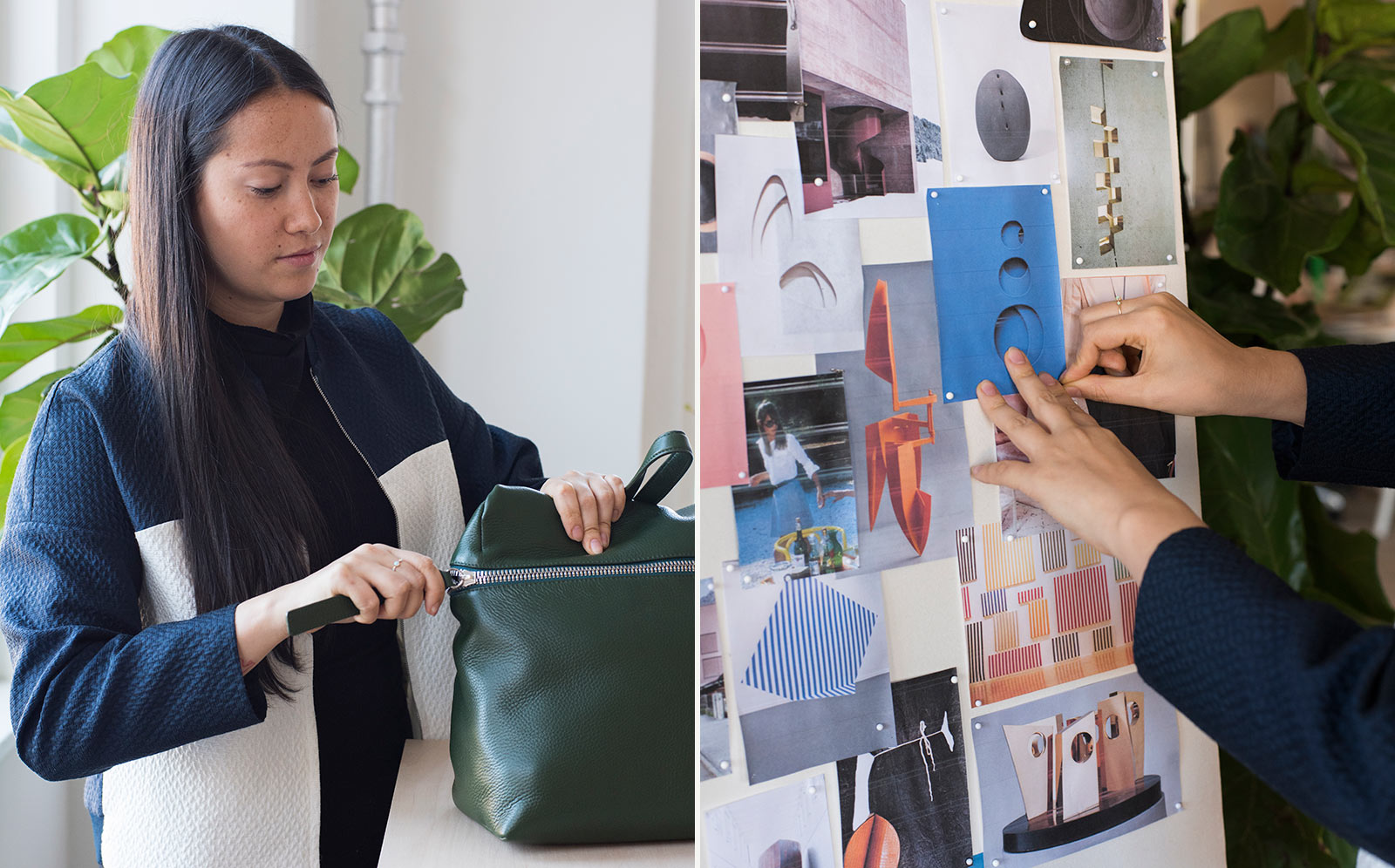
What’s on the mood-board in your new office?
That specific mood-board is a working mood-board for Pre-Fall and Fall of next year. In general, in terms of inspiration and the product, the line tends to come from a functional place. A lot of times people ask me, “What’s your inspiration?” The inspiration really comes from everyday life, usage; what I think girls my age or people around me would use, how they live. Color palette, novelty materials and other things like that tend to come from artistic or creative references. The actual functionality of the bags tends to be very literal, but there’s always the element of the photoshoot and the color palette that come from more of an abstract vibe.

When I first saw your designs, my initial impression was that it was a reaction to all the overtly branded or embellished bags that I see on the streets of New York. Rather than being inspired by something, your bags seem to be a response.
And I think that’s a core message of the brand. We all kind of grew up with that “It” bag and the “It” branding. Obviously there’s something wonderful about “Sex and the City” but I don’t know if every girl identifies with those characters and that lifestyle, that much consumption. When I wanted to make a brand, I liked the idea that you wear your bag, your bag doesn’t wear you. I feel the same way about clothing, fashion and style. I think that it needs to come from you and not from your products, labels and logos that you’re wearing.

Out of curiosity, what are the most popular labels in your own closet?
I’m just laughing because everything is like from Champion and MUJI. So one thing that we do, within the team, is I get everybody that works for me a Champion sweatshirt. And it’s covered in these black embroideries, and as we hit milestones, we add more embroideries to them. It’s like a team sweatshirt. The back side has all of our key retailers [Opening Ceremony, Barneys, Net-a-Porter, Ssense, Shopbop], and then the front side is more like milestones that we hit. There are bigger things like new offices, I got on the Forbes “30 Under 30” list, [I add personalized initials to all the team members who have worked with me for more than a year]. But there are other funny things on it, like Forever21 copied the entire collection a year or two ago, so I put a version of their logo on the sweatshirt. I come from a family, like my father, brother, a lot of my uncles are really into racing; the sweatshirt has like a car racing theme to it.
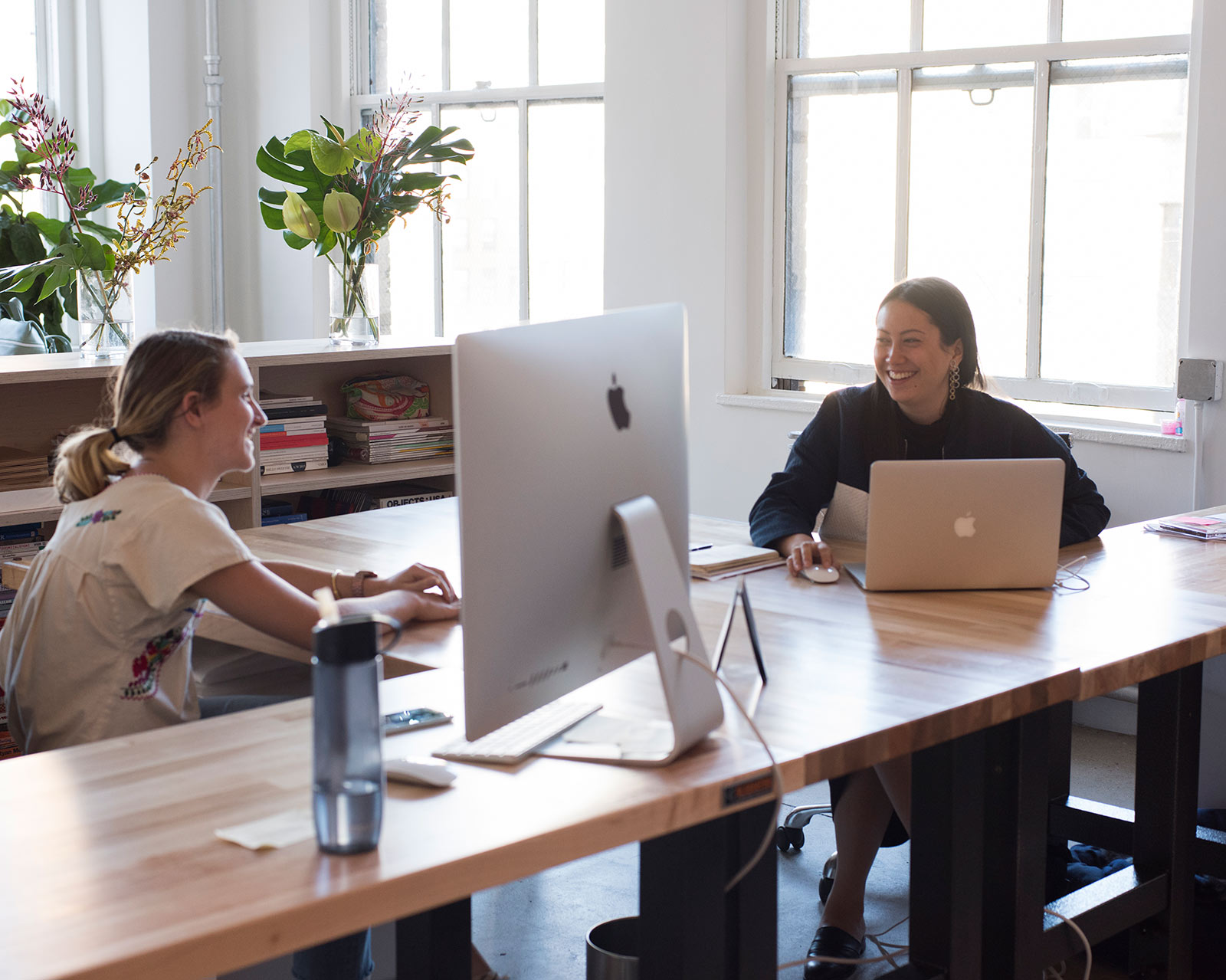
As a very small company, how do you even react to getting copied?
You definitely can do something, but it involves a lot of money. As an entrepreneur, your big question is always, “What can you do with the money that you have? Where can you get the most value with the money that you have?” I [told] my mentors in the CFDA program what happened and asked them, “What’s the best thing to do?” It seemed like it would easily cost over $50k to sue them. And then the other funny thing, too is, the big component to the brand is that the main details are all functional details. And you technically can’t sue people over functionality. But that’s a design choice. It’s intentional that the details are functional details. So based on that, I decided not to do it. But if you were going to ask me, if I had an extra $50k, how would I spend that money? It’s more valuable to me to put that money back into my company, my employees, or to put it back into design and development, things like that. That was sort of the main takeaway that I had. At the end of the day, I don’t really know how much of my customer is that same person. I’m not living in a box; I know that people buy fast fashion and that that’s a huge part of the way we shop today. A lot of people buy cheaper clothing and they go through it more quickly. But I think a big message in my brand, and what I really believe in, is having less.

How do you keep up with the traditional fashion schedule?
The line comprises about 12 to 17 styles. The core collection pretty much always stays the same. The same backpack sizes, there’s a small and a large. There’s a few other shapes within that family. There’s a whole other group of bags that has no hardware on it. Every season, we’ll release a new color or something like that. But for the most part, the styles stay exactly the same. And anything that’s getting added, is more or less, based on something that I feel like is a missing need in the brand. For me, a big goal is to have all the bags you need in your life, so that you can buy everything from one brand. When we add bags, it tends to come from that more than anything else. The Circle clutch in particular I added because I found that I was going to a lot of weddings and I was carrying the inner pouch of another bag [laughs]. I clearly did not have, in the line, a bag that you could comfortably wear to a wedding.
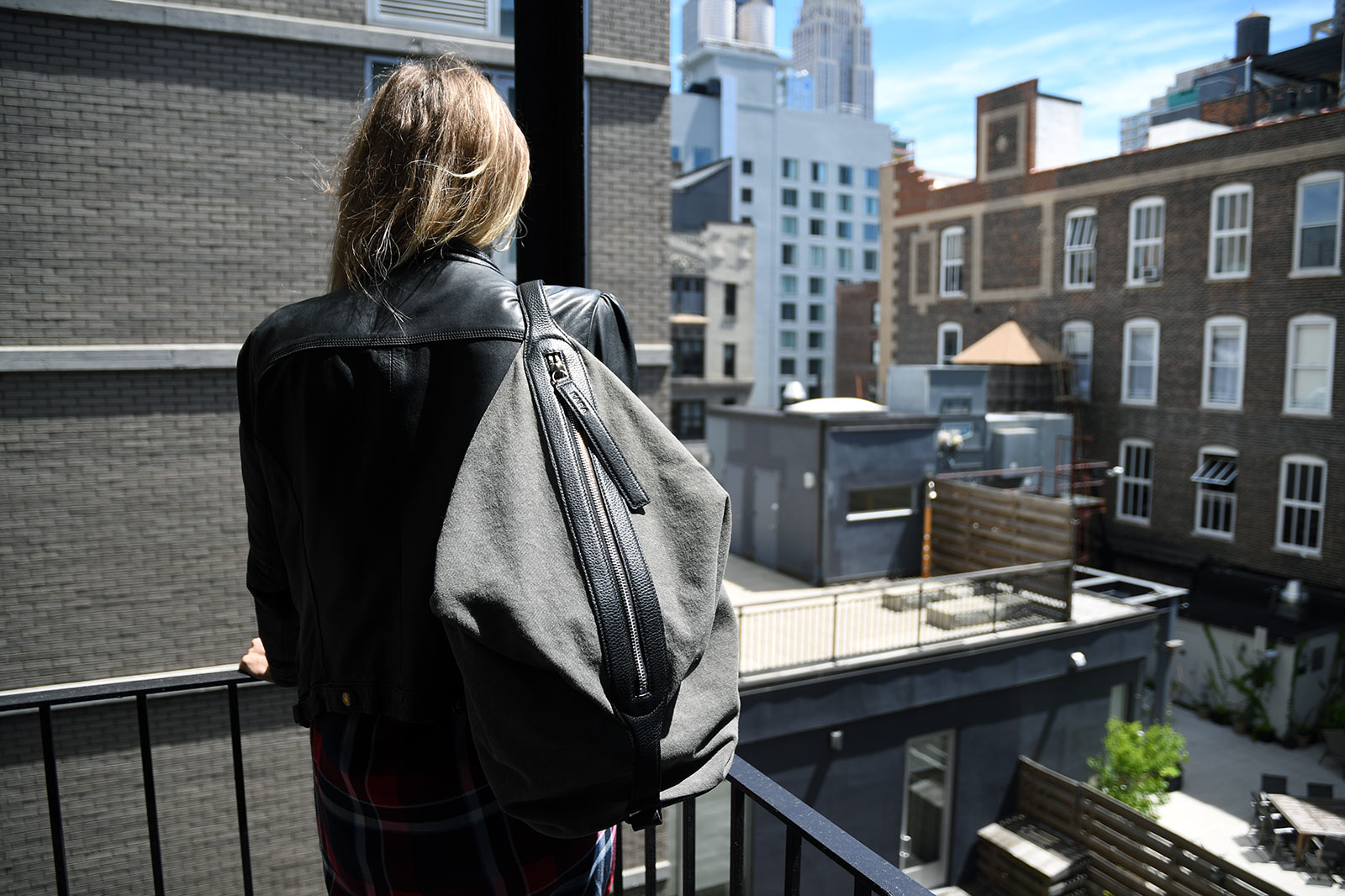
And now you have a new Canvas Dry Bag you designed for Ace Hotel. Also, why aren’t you currently offering Dry Bags on the webstore?
So the Ace Hotel collaboration came about because my friend Peter manages the Ace shop and all the merchandising for it. And that bag is one of the first bags that I designed, and everybody in the office carries it. I just love that bag so much. But in terms of the market and what people picked up on, people love the backpack. So we really focused on that style.
But Peter came to me, and said, “I really want to carry one of your bags.” And I was like, “Oh yeah, you should do a backpack. We can do an exclusive material for you.” And he was like, “No, no, no. The bag that I want is the Dry Bag.” [laughs] And I kind of loved that he said that. Because I find that the people who love the Dry Bag are the people who pay attention to the design and craftsmanship, and are a lot more tapped in.
It’s like a personality test.
It really is. When you first see the bag, it’s not totally obvious how you wear it. It can function like a one-shoulder backpack or it can function more or less like a handbag. And it has a really beautiful drape to it, too. The other thing that I love about the bag is that it’s this really nice mixture of handbag but it has a very sport-active feel to it. There’s a lot of movement in the bag that’s really beautiful.
The assortment on the website tends to be a focus of what our best-sellers are. I think that’s why we stopped carrying [the Dry Bag]. But we’ve gotten so many people asking for it, it’s definitely going to be coming back to the webstore.

Compared to leather versions of the Dry Bag, the waxed canvas gives off a much different feel, especially its unusual shade of not quite olive grey-green.
It does a really nice job of being utilitarian but not a very traditional black, which I feel like everything in our life—even the way that I dress is all black, every day—is. The feel and the weight of this bag have a very different look to it.
We’ve done the bag in a few different materials: we worked with Barneys to do a Mesh Dry Bag from a really heavy PVC. The bag stood in a very rigid way. I think a big part of the brand is that the novelty material we use tends to be a defining element to how we work. Because the bags are so simple, the biggest focus is the quality of materials and the construction. So it’s been really fun to put different bags in different materials and see how they change based on what you’re swapping in.
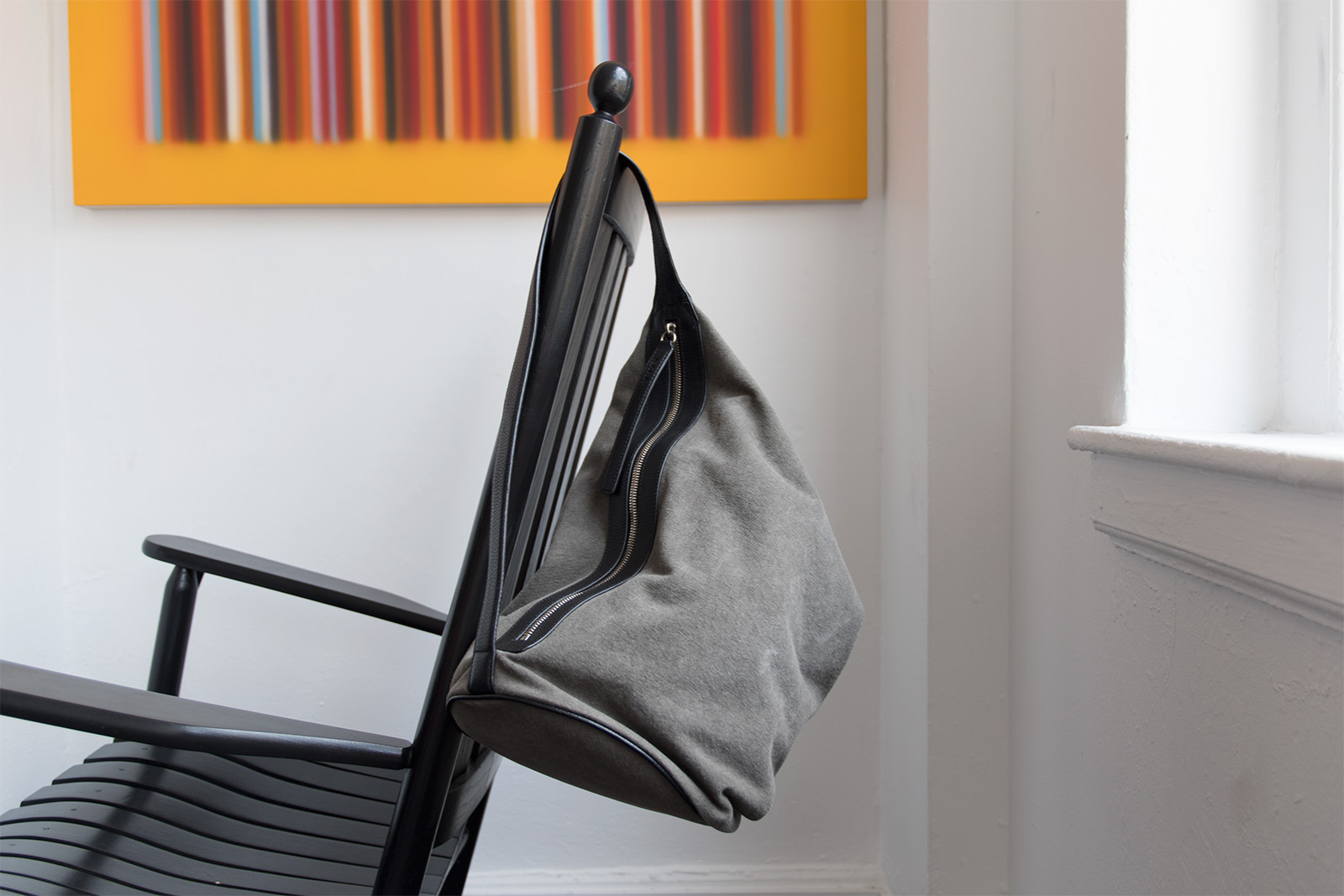
KARA + Ace Hotel’s Canvas Dry Bag launches today, exclusively at Ace Hotel’s webshop, for $475. KARA bags are available online directly, as well as retailers like Barneys, Opening Ceremony, Need Supply and more.
Dry bag product images by Cool Hunting; all other images courtesy of KARA

